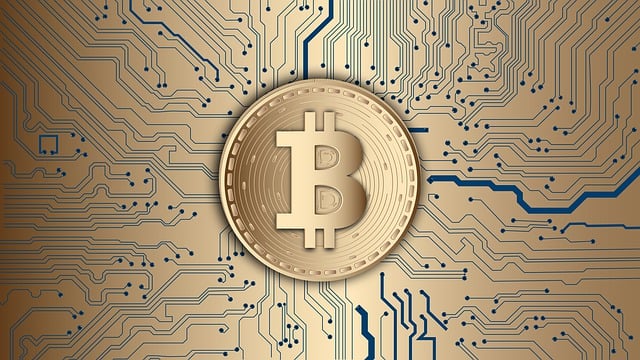Ripple (XRP), using distributed ledger technology (DLT), facilitates fast and low-cost international money transfers, acting as a bridge currency. The emergence of Central Bank Digital Currencies (CBDCs) presents both challenges and opportunities for XRP, with its potential to revolutionize global finance through enhanced financial inclusion and streamlined cross-border transactions. Key factors influencing XRP's future value include CBDC development, regulatory changes, market sentiment, and media coverage. As financial institutions explore CBDCs' benefits, the integration of these digital currencies could significantly impact currency exchange rates and cross-border transactions, positioning XRP as a valuable bridge currency with fast settlement times, low fees, and high scalability.
“Discover the intriguing world of Ripple and its native cryptocurrency, XRP. This article offers a comprehensive guide to understanding the dynamics of XRP coin value in the context of Central Bank Digital Currencies (CBDCs). From a brief overview of Ripple’s technology to exploring the impact of CBDCs and key factors influencing XRP’s market, we delve into the future potential of this controversial yet promising asset. By the end, you’ll grasp the intricate relationship between CBDCs and XRP’s value trajectory.”
- Understanding Ripple and XRP: A Brief Overview
- Central Bank Digital Currencies (CBDCs) and Their Impact on XRP
- Factors Influencing XRP Coin Value
- The Future of XRP: Potential with CBDCs
Understanding Ripple and XRP: A Brief Overview

Ripple, often referred to as XRP, is a decentralized protocol designed for fast and low-cost international money transfers. It aims to revolutionize cross-border transactions by providing an efficient alternative to traditional banking systems. At its core, Ripple uses a distributed ledger technology (DLT) similar to blockchain, enabling secure and transparent peer-to-peer transactions.
XRP is the native cryptocurrency within the Ripple network, serving as a bridge currency that facilitates rapid and seamless conversions between different fiat currencies. This makes it particularly appealing for central bank digital currencies (CBDCs), which are gaining traction globally as a means to enhance financial inclusion and streamline payments. By offering near-instant settlements with minimal fees, Ripple’s technology has the potential to transform global finance and make international transactions more accessible and cost-effective.
Central Bank Digital Currencies (CBDCs) and Their Impact on XRP

The emergence of Central Bank Digital Currencies (CBDCs) has been a game-changer in the financial world, and its impact on cryptocurrencies like XRP is significant. CBDCs represent the digital form of fiat currency issued and backed by central banks, offering a more efficient and secure way to conduct transactions compared to traditional cash. With the increasing adoption of digital currencies worldwide, central banks are recognizing the potential benefits of introducing their own digital assets.
One of the key effects of CBDCs on XRP is the potential disruption to cross-border payments. XRP’s current use as a bridge currency in international transactions could face competition from centralized digital currencies. If major central banks adopt their own digital currencies, it might reduce the need for intermediaries like Ripple, thus impacting XRP’s value and demand. However, it also presents an opportunity for XRP to gain recognition and integration within the global financial system, especially if it can demonstrate faster settlement times and lower fees compared to traditional CBDC systems.
Factors Influencing XRP Coin Value

The value of XRP, like any cryptocurrency, is subject to a multitude of factors. One significant influencer is the ever-evolving landscape of central bank digital currencies (CBDCs). As more traditional financial institutions explore and potentially adopt their own digital currencies, the demand for XRP could shift dramatically. If CBDCs become widely adopted, they might compete with XRP for transactions within global payment systems, impacting its value.
Additionally, regulatory changes and government policies play a crucial role. Favorable regulations towards cryptocurrencies can boost investor confidence, driving up XRP’s value. Conversely, stricter controls or negative sentiments from regulatory bodies can cause a dip. Market sentiment and media coverage also heavily influence XRP’s price. Positive news and partnerships can spark interest, while negative headlines or general market volatility might lead to a decrease in its coin value.
The Future of XRP: Potential with CBDCs

With the rising popularity of central bank digital currencies (CBDCs), the future of XRP looks promising. Many financial institutions and governments worldwide are exploring the potential of CBDCs to enhance payment systems, promote financial inclusion, and improve efficiency. As a result, there is growing interest in blockchain technology and digital assets like XRP.
The integration of CBDCs into the global financial landscape could significantly impact currency exchange rates and cross-border transactions, creating opportunities for XRP to play a pivotal role as a bridge currency. Its fast settlement times, low transaction fees, and high scalability make XRP an attractive option for central banks looking to modernize their digital payment infrastructure. This potential synergy between CBDCs and XRP could drive up the coin’s value, making it a game-changer in the digital asset space.
In conclusion, Ripple’s XRP coin has faced challenges due to the emergence of central bank digital currencies (CBDCs), but its potential future with CBDCs remains promising. Understanding both the technology behind Ripple and the global shift towards digital currencies is crucial for gauging XRP’s value. As the financial landscape evolves, the symbiotic relationship between CBDCs and XRP could significantly impact the global payment system, making it an exciting prospect for investors.
